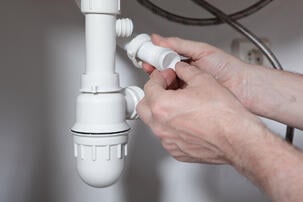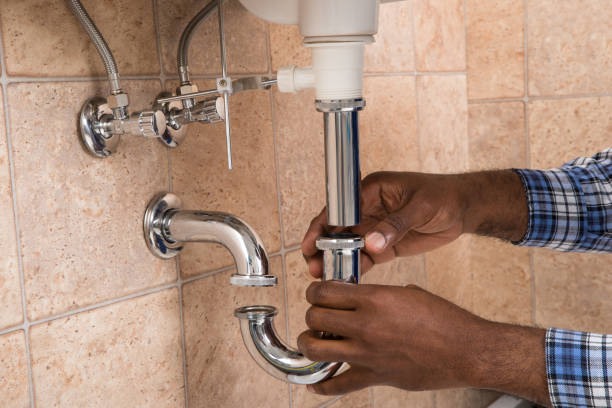Are you currently searching for help and advice on Understanding the Basics of Your Home's Plumbing System?

Plumbing is an essential facet of any type of home, responsible for providing tidy water for alcohol consumption, cooking, and showering, in addition to removing wastewater securely. Understanding the essentials of home plumbing is necessary for every home owner to ensure appropriate maintenance, troubleshooting, and, if needed, repair work. In this newbie's guide, we'll cover the basic concepts of home plumbing to aid you become extra aware of just how it works.
Water Heating System
The water heater is responsible for heating water for domestic use, including showering, cooking, and cleansing. Common types of water heaters include tank-type hot water heater, tankless (on-demand) water heaters, and heat pump hot water heater. The water heater is linked to the water system and provides warm water to plumbing components as needed.
Drain System
The water drainage system removes wastewater from your home and carries it away to a sewage therapy center or septic system. It includes a network of pipelines, installations, and fixtures that carry wastewater from plumbing fixtures to the primary drain line or sewage-disposal tank. Correct drainage is necessary to stop obstructions, backups, and sewage leaks.
Ventilation System
The ventilation system assists preserve appropriate air pressure and protect against drain gases from entering your home. Air vent pipes, additionally referred to as air vent stacks, prolong from plumbing components to the roof, allowing drain gases to escape safely outside. Ventilation pipelines also enable air to enter the drain system, helping with smooth wastewater flow and preventing suction or vacuum results.
Water System System
The supply of water system brings clean water right into your home from a metropolitan water resource or a personal well. It contains a main water line that attaches to your home's plumbing system, typically located underground. A water meter measures the quantity of water eaten, while a shut-off shutoff enables you to manage the circulation of water right into your home.
Plumbing Components
Plumbing components are tools that deliver water to different parts of your home and consist of sinks, taps, bathrooms, showers, tubs, and appliances such as dishwashers and washing devices. Each fixture is connected to the water supply system through pipes and fittings and may have its shut-off valve for maintenance or emergencies.
Common Plumbing Tools
Having the right tools handy is crucial for performing standard plumbing fixings and maintenance tasks. Usual plumbing devices consist of adjustable wrenches, pipe wrenches, pliers, pipeline cutters, hacksaws, bettors, augers (or drain snakes), and Teflon tape. Having these devices easily available can assist you deal with minor plumbing issues successfully.
Standard Plumbing Fixings
While some plumbing fixings may require specialist assistance, lots of usual issues can be addressed with basic DIY techniques. Learning just how to deal with a leaking tap, unclog a drainpipe, change a toilet flapper, or fix a trickling showerhead can save you time and money on plumbing repairs.
Conclusion
Understanding the basics of home plumbing is essential for each house owner to keep a secure, useful, and reliable plumbing system. By acquainting yourself with the water system system, plumbing components, water drainage system, ventilation system, typical plumbing devices, and fundamental fixings, you can with confidence address small plumbing concerns and guarantee your home's plumbing system runs smoothly.
Understanding Basics of Home Plumbing System: A Beginner's Guide
The Main Components of Your Home Plumbing System
The Water Supply System
This system is responsible for transporting fresh water into your home. It usually has a main water line that splits into two branches: one directed towards cold water services and the other connected to a water heater for hot water. The pressure is key here; it ensures water reaches all parts of your house.
The Drainage System
Once water has been used, it becomes wastewater that needs to be removed from your home. This is where the drainage system comes into play. It includes all the pipes that carry wastewater and sewage away from your house to sewage treatment facilities or septic tanks.
The Vent System
The vent system prevents sewer gases from entering your home and helps maintain the pressure balance that allows wastewater to flow out properly. These vents usually exit through the roof of your house.
Water Heating System
For those who enjoy hot showers or using hot water for cleaning, the water heater is a crucial part of the plumbing system. It can be a tankless system, which heats water on demand, or a traditional water tank model.
Common Plumbing Problems and Basic Troubleshooting
Plumbing systems, while designed to be durable, can face issues like clogged drains, leaky faucets, or low water pressure. Here are some basic troubleshooting tips:
Clogged Drains
Use a plunger or a plumber's snake to try and dislodge whatever is blocking the drain. Regular cleaning can prevent clogs.
Leaky Faucets
Often caused by worn-out washers or gaskets, these can usually be replaced by someone with basic DIY skills.
Low Water Pressure
This might be due to sediment build-up in your fixtures or a leak somewhere in your water line. Cleaning out aerators or seeking a professional to detect leaks might be necessary.
Preventive Maintenance Tips
Maintaining your plumbing system is key to avoiding emergencies. Regularly check for leaks, avoid disposing of grease down the sink, and have your system inspected by a professional plumber at least once a year.

I was brought to that report on Plumbing Basics Every Homeowner Should Know from an associate on a different site. Make sure you pause to share this blog post if you liked it. Many thanks for taking the time to read it.
Call Today